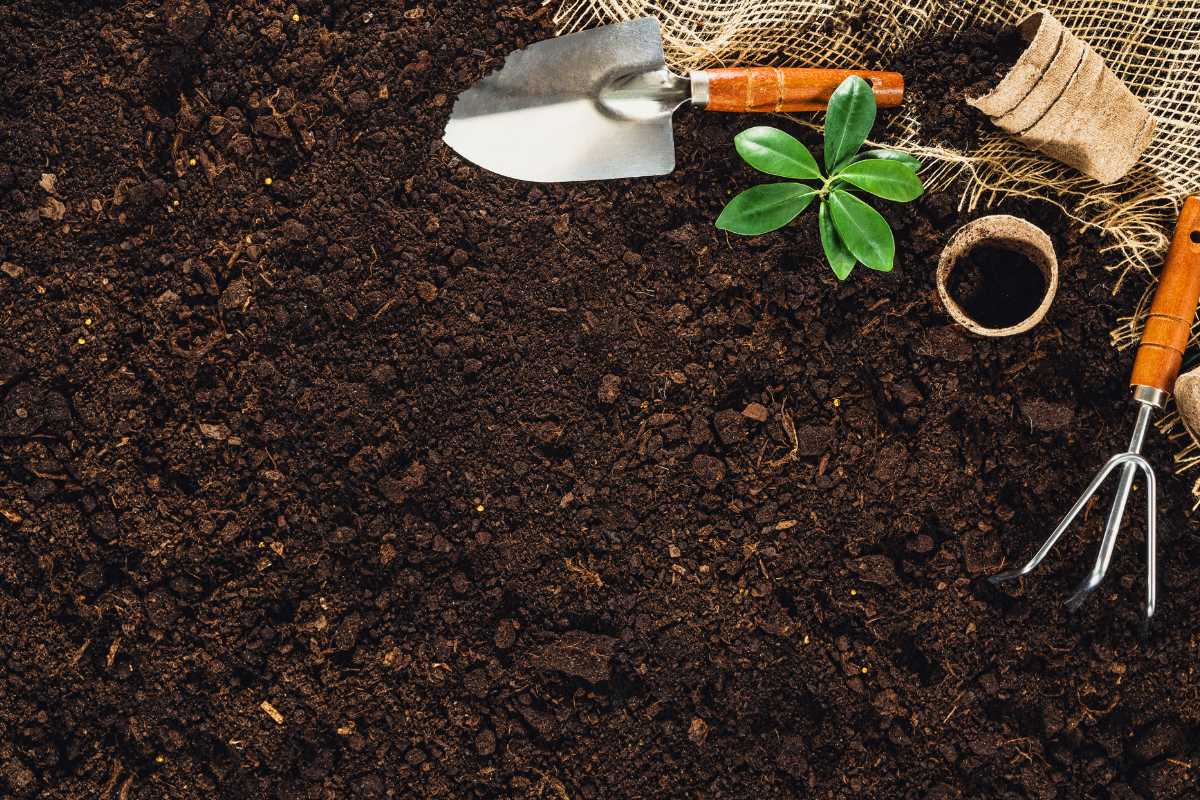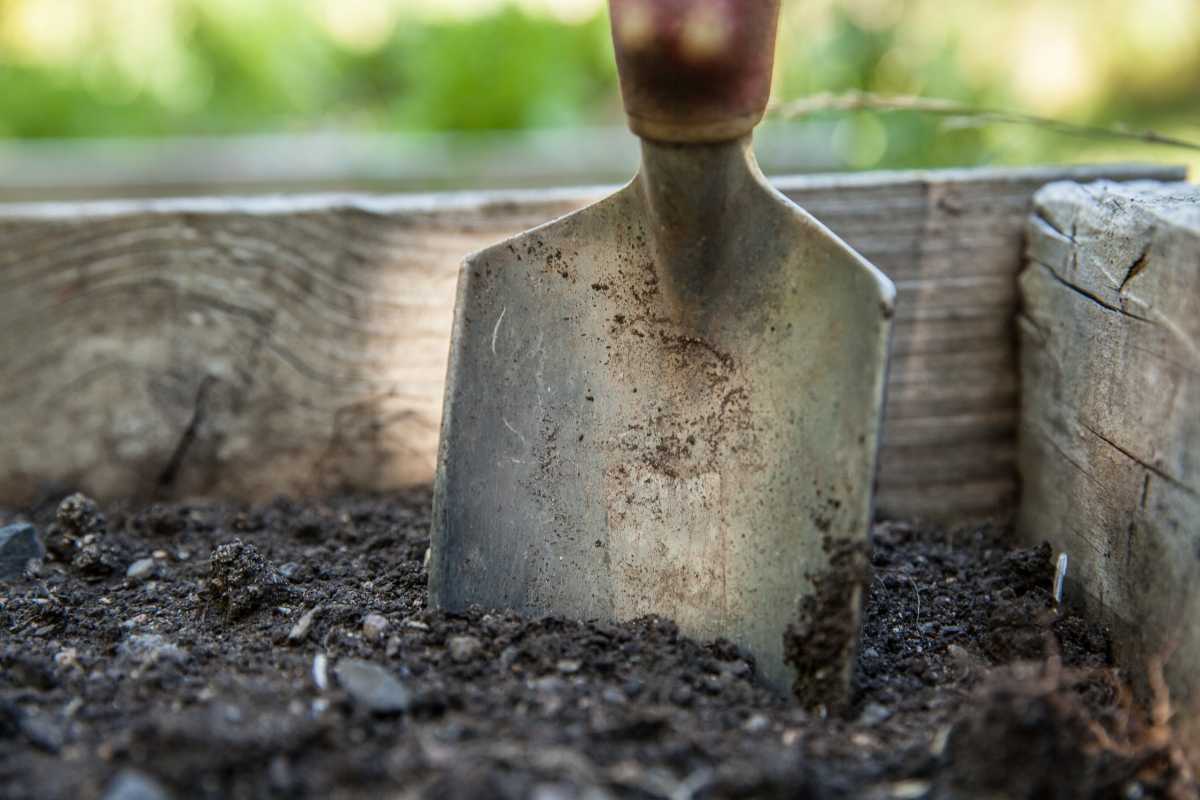You might think that mud is mud. But that is not completely true, there are many types of soil. Different soil is good for different types of plants and contains different materials and nutrients. Soil composition can vary dramatically, and a combination of all textures is the best soil for growing.
In this article, I’m going to tackle the differences of topsoil vs garden soil, and how each type of soil is used.
The basic difference between the two is that topsoil refers to the top layer of soil on the earth’s surface. Topsoil has a high concentration of organic matter, but can be relatively low in nutrients. Garden soil is topsoil with added nutrients and is commercially available with various additives that are plant specific.
What is Topsoil?

Topsoil refers to the top 5–10 inches of soil on the earth’s surface, whether your garden or lawn. It is made up of eroded rock, vegetation, tree bark, dead animals, and other organic matter that naturally builds up on the surface of the earth.
- Read More: What is Topsoil and What is it Used For?
The nutrient content of topsoil is what makes it so popular with gardeners, as it contains general nutrients that are beneficial to all types of plants.
Topsoil textures can be a combination of sand, clay, or silt, although the best soil type is a mix of all three with a loamy texture. Loam is made up of 28-50 percent silt, less than 52 percent sand, and 7-27 percent clay.
Topsoil is harvested from the top layer of earth, and then treated to remove rocks. While it does contain a large amount of organic materials, it doesn’t contain any soil amendments. So it’s better used as a fill rather than specifically for growing for improved plant health.
It usually drains well, although you can get various textures of topsoil. Topsoil is usually brought in larger quantities for landscaping and similar.
Topsoil can take up to 100 years to form properly. It is where most plants grow, and is currently under threat from modern farming methods that result in erosion and chemicals stripping the nutrients.
What is Garden Soil?

Commercially available garden soil is topsoil that has added nutrients and minerals. The additives are usually aimed at providing nutrients for specific plants, so you can get different garden soil types depending what you are growing.
Garden soil can vary in quality depending on the supplier, so you want to be careful before buying many bags of gardening soil at one time. Check on the source of soil materials before buying bulk garden soil.
The additives add nutrients to the soil, so it is good when planting outdoors or for vegetable plots. It is a good addition to your garden to help your plants and vegetables grow. You can use garden soil for planting in pots, but it’s a good idea to add compost to aid drainage.
Ideally, you should buy a garden soil mix that has a pH level between 6 and 7. This will prevent your soil from becoming too acidic or alkaline.
You can run a soil test on the soil in your garden to help you find the best garden soil to complement your existing soil. Soil test kits are readily available online.
If you are gardening organically, make sure you read the list of amendments, as garden soil companies will sometimes add chemical fertilizers.
Should I Use Topsoil Or Garden Soil?

Deciding whether to use topsoil or garden soil depends on what you’re using it for. There are different mixtures of soils for herb gardens, vegetable gardens, organic gardens, and landscaping and lawn care.
Topsoil is cheaper, and is best for filling in areas or levelling out your garden. If you want to add soil to your garden, then you should go for topsoil.
Garden soil can be more expensive, and as it is tailored to specific plants, it’s best used for plant beds. Garden soil is best used to improve the quality of your existing topsoil.
If you’re planting in containers, then you should use a mix of garden soil and potting compost as soil alone will be too dense for pots. For vegetable plots or to add nutrients to a large area, you can mix topsoil, garden soil and compost.
You can also perform a soil test on your existing soil. That way, you can buy soil that will complement or improve your soil.
Topsoil vs Garden Soil Final Thoughts
There isn’t much difference between garden soil and topsoil. They both have their uses, and they’re both great additions to any gardener’s toolbox.
However, if you need to fill an entire plot with soil, then you might consider getting some topsoil instead of going through all the trouble of mixing together several ingredients.
For other helpful articles on soil, be sure to check out these articles:
- Topsoil vs Compost
- Organic vs Non-Organic Soil
- Organic Soil Complete Guide
- How to Use Soil Conditioners
Topsoil vs Garden Soil FAQs
Is topsoil better than garden soil?
This depends on the usage. Topsoil is better if you need regular soil to start a garden, add soil or fill in a pond. Garden soil is better for adding to plant beds as you can get soil that has nutrients specific to what you are planting.
Can you use garden soil as topsoil?
You can use garden soil as topsoil, but it’ll be more expensive. If you’re growing area is small then you can absolutely use garden soil as topsoil. But if you are landscaping a larger area, it’s best to stick to topsoil.
When should I use topsoil in my garden?
Topsoil should be used to add large amounts of soil, create levels, fill in or level out an area of your garden.
What is the best soil for a raised vegetable garden?
A mix of soil is usually best. You can mix topsoil, garden soil, and compost to get a good balance of moisture retention, drainage, and nutrients.
How do you turn garden soil into topsoil?
Garden soil is topsoil with added nutrients, so you can’t really turn it into topsoil. But you can still use it as topsoil
How to turn topsoil into garden soil?
Adding nutritional additives to topsoil can make it garden soil. You can add things like compost, well rotted animal manure, and organic matter.
What is the best topsoil for gardening?
The best topsoil is a mix of clay, sand and silt that allows it to be well-draining with a good texture.
How deep should topsoil be for vegetables?
Topsoil is only the top five to ten inches of soil. The roots of most vegetables grow to a depth of eighteen to twenty-four inches.
Is topsoil the same as compost?
No, topsoil is not the same as compost. Compost is made up of well-rotted organic material and contains a lot of nutrients. Compost can be formed within 6 months to 2 years depending on the material. Topsoil takes 100 years to form properly, and is made up of broken down rocks, as well as organic matter. You can add compost to topsoil to increase its nutrient content, drainage and moisture retention.


